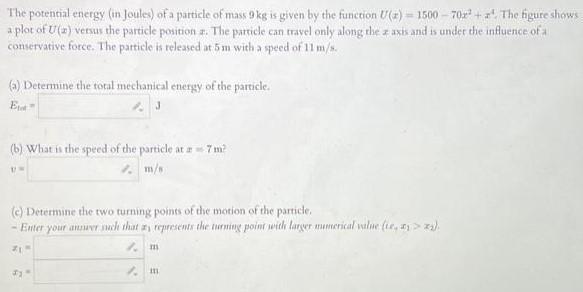The potential energy (in Joules) of a particle of mass 9 kg is given by the function U(x) = 1500 − 70x2 + x4. The figure shows a plot of U(x) versus the particle position 2 . The particle can travel only along the x axis and is under the influence of a conservative force. The particle is released at 5 m with a speed of 11 m/s. (a) Determine the total mechanical energy of the particle. Etot = (b) What is the speed of the particle at x = 7 m? v = m/s (c) Determine the two turning points of the motion of the particle. Enter your answer such that x1 represents the turning point with larger numerical value (ie, x1 > x2 ). x1 = m x2 = m
